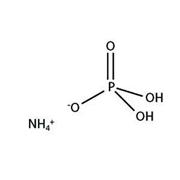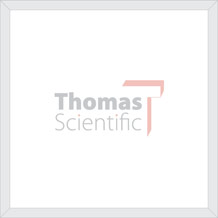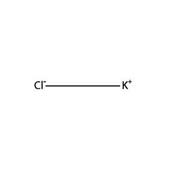500 g, bioWORLD, 12350000
-
Ammonium phosphate, monobasic
bioWORLDIt is formed when a solution of phosphoric acid is added to ammonia until the solution is distinctly acidic. It is often used in the blending of dry agricultural fertilizers. It supplies soil with the elements nitrogen and phosphorus in a form which is usable by plants. The compound is also a…
-
The bioWORLD bioPLUS™ anhydrous potassium phosphate dibasic is suitable for use in molecular biology experiments and plant tissue culture technique. Application: For Research & Laboratory Use Only
-
Potassium iodide
bioWORLDA simple iodide salt utilized as a fluorescence quenching agent An inorganic compound used medicinally in tablets. A precursor to silver iodide in photography. A component in some disinfectants and hair treatment chemicals. Used as a nutritional supplement in animal feeds and…
-
Potassium hydroxide
bioWORLDBuffer reagent Used for making potassium soap, shampoo, potassium permanganate etc. Used in dye, drugs manufacture, galvanization, carving, lithography etc. A basic reagent used for alkaline lysis and pH purposes. Specifications Reagent Grade Moisture: 10-15% …
-
Agar, Phytoagar
bioWORLDFree of extra salts that are often present in many agar preparations and affect plant growth. Gel Strength: 950 g/cm 2 Working Concentration: 5−7 g/L Gelling Temperature: 38°C Moisture: 10.92% Ash Content: 1.2% Swelling Index: 9.0 mL Water Absorption:…
-
Gelatin for Bacteriological Media
bioWORLDA high grade granular preparation of gelatin that can be used alone as a solidification agent or incorporated into microbiological media as a nutrient or to determine gelatin liquefaction. Ash: 0.17% Moisture: 8.7% Coliforms: less than 3/gm Std. Plate: 10/gm/p> E. coli…
-
Potassium Carbonate, anhydrous
bioWORLDSynonyms: Carbonate of potash; Dipotassium carbonate; Dipotassium salt; Pearl ash; Potash; Salt of tartar; Salt of wormwood A potassium salt for deproteinization and as a drying agent Common biochemical reagent used in soap, glass, and china production and as a drying agent and…
-
Guanidine thiocyanate
bioWORLDA useful tool in for RNA isolation and protein solubilization. A strong chaotopic agent used at high concentrations for denaturing native proteins and inactivating RNAses. Also known as Guanidine isothiocyanate Biotechnology Grade A280 (70%, water, 250°C): <0.8 …
-
EDTA, disodium salt, dihydrate
bioWORLDA metal chelating agent commonly used in tissue culture media and biological buffers. Inactivates nucleases. Also known as Ethylenediaminetetraacetate, disodium salt, dihydrate Biotechnology Grade (also available in Pretoemics Grade) Insolubles: <0.005% Heavy metals (as Pb):…
-
EGTA (Ethyleneglycol bis (2-Aminoeth
bioWORLDA metal chelating agent specific for calcium ions. Commonly used in tissue culture media and biological buffers. Also known as Ethyleneglycol bis (2-Aminoethyl ether)-N,N,N',N' tetraacetic acide Ultra Pure Grade DNAse (exonuclease), NICKase (endonuclease), RNAse, and…
-
Potassium ferricyanide
bioWORLDAn electron acceptor that is used to determine dopamine hydrochloride levels Reagent used in the buffer of B-Gal substrate assays. Specifications ACS Grade Insolubles: <0.005% Chloride: <0.01% Sulfate: <0.003% Ferric Compounds: <0.05% …
-
L-Asparagine
bioWORLDSynonym: ( S )-2-Aminosuccinic acid 4-amide, L-Aspartic acid 4-amide Anhydrous Appearance: White Crystalline Powder Density : 1.543 g/cm3 HS Code : 29241900 IUPAC_Name: Asparagine Melting Point: 235°C
-
Ammonium chloride
bioWORLDA compound used in the lysis of red blood cells and protein isolation techniques. It is a reagent used in a variety of industrial and research applications. Useful in protein isolation techniques. Also used in the study of basic calcium phosphate crystals in fibroblasts. Inhibits intracellular…
-
Ferric chloride, hexahydrate
bioWORLDA catalyst in organic synthesis ACS grade Insolubles: <0.01% Nitrate: <0.01% Phosphorus (as PO4: <0.01% Sulfate: <0.01% Copper: <0.003% Ferrous Iron: <0.002% Non-precipitables (NH4OH):<0.1% Zinc: <0.003 Regulated…
-
Activated charcoal acid washed
bioWORLDHigh-purity carbon, especially useful for minimizing contamination in products. Supports or facilitates plant growth and/or shoot proliferation in two or more plant tissue cultures. This charcoal is plant tissue tested. Appearance: Grey solid Density : 1.8-2.1g/cm3 Oxidation_State: 4,3,2,1,0,-1,-2,-3,-4
-
L-Arginine
bioWORLDSynonym: ( S )-2-Amino-5-guanidinopentanoic acid A precursor of nitric oxide synthesis that induces vasodilation Appearance: White crystalline powder Boiling Point : ~367.6°C at 760 mmHg (Predicted) Density : 1.46 g/cm3 HS Code : 29252000 IUPAC_Name:…
-
bioPLUS™ Zinc Sulfate Heptahydrate
bioWORLDThe bioWORLD bioPlus™ zinc sulfate heptahydrate is mainly used in treatment of zinc deficiency. It is suitable for agricultural purposes. It is used in rayon producing industries. Zinc Sulfate Heptahydrate mainly acts as an anion channel blocker
-
Ammonium Molybdate(VI),Tetrahydrate
bioWORLDCompound used in cryo-negative staining and is also used as an analgesic. Appearance: White crystalline powder Density: 2.50 g/cm3 at 25 ¡ãC HS Code: 28417000 Melting Point: 190ºC RTECS Number: QA5076000
-
Sodium Alginate
bioWORLDSodium Alginate, or Alginic Acid Sodium Salt, is a natural amylose carbohydrate distilled from algae. It is used in biotechnology as an effective stabilizer and emulsifier. In the presence of Calcium ions, Sodium Alginate has been observed to form cross-linked gels for cell immobilization. Plant…
-
Potassium Acetate
bioWORLDPotassium salt of acetic acid. Used as a deicer instead of chloride salts such as calcium chloride or magnesium chloride. Used as part of replacement protocols in the treatment of diabetic ketoacidosis because of its ability to break down into bicarbonate and help neutralize the acidotic…
-
Sodium Acetate Anhydrous is used for precipitation of nucleic acids and preparation of gel stains for protein gel electrophoresis. Sodium Acetate Anhydrous can serve as a reagent with many uses including nucleic acid precipitation in isolation protocols and for use in buffers. Application: For…
-
EDTA, tetrasodium salt, dihydrate
bioWORLDA metal chelating agent commonly used in tissue culture media and biological buffers. Also known as Ethylenediaminetetraacetate, tetrasodium salt, dihydrate Ultra Pure Grade Heavy metals (as Pb): <0.001% Iron: <0.005% Nitrilotriacetic acid: <0.1% Appearance:…
-
Potassium Chloride
bioWORLDA common laboratory reagent and standard Specifications ACS Grade Iodide: <0.002% Bromide: <0.01% Chlorate and Nitrate: <0.003% Nitrogen compounds: <0.001% Phosphate: <0.0005% Sulfate: <0.001% Barium: <0.001% …
-
Agarose 1, Biotech Grade
bioWORLDbioPlus Agarose I is formulated specifically for analysis of nucleic acids, using standard electrophoretic techniques. Biotechnology Grade Gel strength: >1200g/cm2 Gelling point: 33-39°C Melting point: 87-89YC Sulfate EEO(-mr) DNase, RNase, Protease activity: None detected …
-
Sodium Iodide
bioWORLDThe bioWORLD sodium iodide is mainly used as a medial supplement to enhance the production of iodine in the body, which helps to maintain proper functioning of thyroid gland. It is also used for veterinary purposes. Application: For Research and Laboratory use only
-
A polymer used to precipitate proteins, viruses, DNA and RNA. Compound is hydroscopic.s Appearance: Solid Density: 1.21 g/cm3 at 20°C pH Value: 5-7 RTECS Number: TQ4025000
-
This is a common chemical reagent used in buffer solutions. Application: For Research and Laboratory use only
-
-
Ammonium Acetate
bioWORLDBeing the salt of a weak acid and a weak base, ammonium acetate has a number of distinctive properties. It is occasionally employed as a biodegradable de-icing agent. It is often used with acetic acid to create a buffer solution, one that can be thermally decomposed to non-ionic products. It is…
-
Ammonium phosphate, dibasic
bioWORLDIt is used as Fertilizer, fire retardant, yeast nutrient in winemaking and brewing mead. DAP is also used as a yeast nutrient in winemaking and brewing mead; It is also used as an additive in some brands of cigarettes purportedly as a nicotine enhancer; to prevent afterglow in matches, in purifying…
-
bioPLUS™ Starch (Potato)
bioWORLDThe bioWORLD bioPlus™ starch (potato) is mainly used as a thickening agent while making cookies, puddings and sauces. It is also used in textile and paper industry. Application: For Research and Laboratory use only The most important carbohydrate in the human diet and is contained in such staple…
-
bioPLUS™ Polyvinylpyrrolidone 40000
bioWORLDPolyvinylpyrrolidone 40,000, or better known as PVP, is a solubilizing polymer. It is an effective lubricant and protein stabilizer. PVP has been used to remove alkaloids and phenolics from plant tissue samples to improve mass spectrometry results. Polyvinylpyrrolidone is generally used at 2-4%…





























